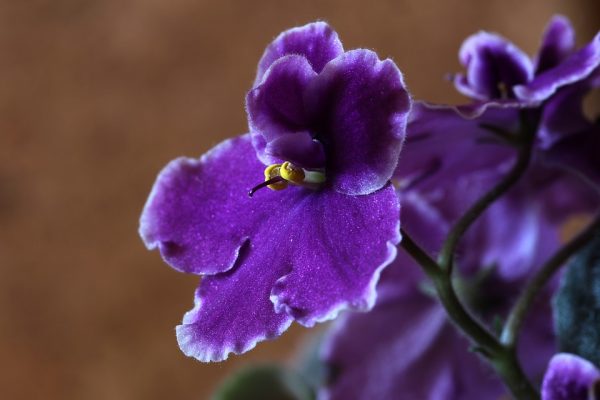The Garden Post
African Violet Care
African Violets have garnered as reputation difficult to grow, but that couldn’t be farther from the truth. While they may be particular about their care needs, they’re not so different from the needs of other popular houseplants.
These houseplants are loved for their beautiful flowers in different shades of pink, purple and white. They’re also known for their long lives, averaging about 50 years.
Light – Bright, indirect light is key. Direct light can scorch their fuzzy leaves and moderate to low light negatively impacts the flowering.
Water – African violets prefer to stay evenly moist at all times, but not soaking wet. Water once the top third of the soil is dry, but be careful to not get water on the leaves as it can lead to fungal issues and leaf decline. The easiest method is to water from the bottom by using an African violet pot or by setting an ordinary pot into a saucer of water for 15 to 20 minutes and dispose any excess afterwards. If watering from the bottom is not possible, pushing the spout of your watering can directly into the soil is an easy way to prevent wetting the leaves. African violets prefer lukewarm water.
Soil – Well-draining, fast drying soil is the best soil for African violets. Specific soils designed for African Violets, like Espoma African Violet Soil, are the best choice for planting, however all-purpose soils will work too.
Temperature – 65° to 75° is ideal and they should not be exposed to temperatures lower than 60°.
Humidity – African violets prefer high humidity levels, but due to their dislike of getting their leaves wet, you shouldn’t mist them. Instead, set a tray of water and pebbles nearby or invest in a small humidifier. Alternatively, set African violets in your bathroom if it gets enough light.
Fertilization – As with the soil, specific African Violet fertilizers, like Bonide African Violet Food, are the best option. African Violets should be fertilized regularly according the label’s instructions. Reduced flowering along with pale leaf color are symptoms of a need for fertilization.
Size – Typically, African violets only get a few inches tall but they can reach up to 16 inches wide, depending on variety.
Deadheading – Removal of faded flowers will encourage new growth.
Repotting – African violets actually do best when they’re slightly root bound so you don’t want to repot too often. When you do repot, select a container no more than 1 size larger than the current one.
Propagation – They’re fairly easy to propagate, either from cuttings or from offsets (small, new plants growing independently from the main plant).
Toxicity – Considered non-toxic to people and pets.



